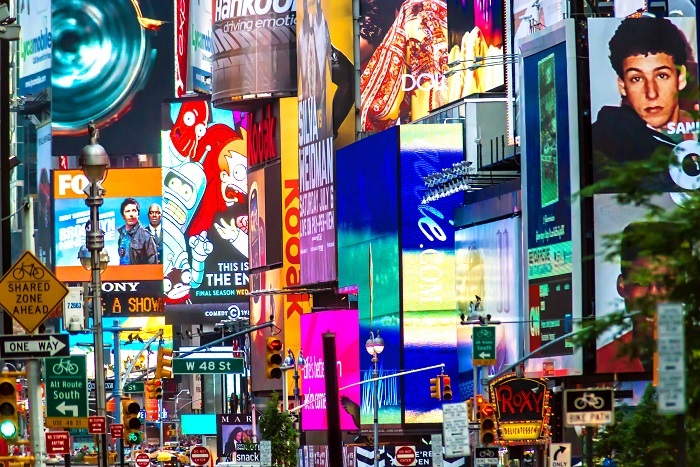
 Data Structure
Data Structure Networking
Networking RDBMS
RDBMS Operating System
Operating System Java
Java MS Excel
MS Excel iOS
iOS HTML
HTML CSS
CSS Android
Android Python
Python C Programming
C Programming C++
C++ C#
C# MongoDB
MongoDB MySQL
MySQL Javascript
Javascript PHP
PHP
- Selected Reading
- UPSC IAS Exams Notes
- Developer's Best Practices
- Questions and Answers
- Effective Resume Writing
- HR Interview Questions
- Computer Glossary
- Who is Who
The Concept of Camouflaged Advertising
For us, the world is available with a click. We are spoiled with information, so it becomes difficult for companies to draw our attention. Through age-old methods of advertising, companies have been dragging the attention of consumers to their products, services, and brand names. Through the creative storytelling process, they have been able to tell us the benefits of the product, why it is preferable to the competitor's product, and why and how the consumer should buy the product. However, after years of being exploited by companies (selling us things we don't need) through lucrative advertisements, consumers have become banner blind.

Banner blindness is a symptom in which the consumer turns a blind eye, consciously or subconsciously, toward the brand name of the product or service being advertised. In banner blindness, consumers are able to shut down all the ad noises; they will be sitting right in front of their desktops and listening to or viewing the advertisement (because they have to) and still not be touched at all by that. Creative problems need creative solutions, and hence companies came up with camouflaged advertising.
In this article, we will delve into the concept of camouflaged advertising, the benefits and drawbacks of camouflaged advertising, and how companies use camouflaged advertising.
Meaning of Camouflaged Advertising
This is a type of advertising concept in which the brand does not reveal its name or product to the consumer on purpose. The objective here is to create curious customers who want to know what brand is being advertised in this particular camouflaged advertisement. The aim here is to create advertisements that do not feel like advertisements, thereby capturing the full attention of the consumer. The advantage of the product is that it is narrated in a story format, but it is so subtle that you might feel like it is a part of the story.
Benefits of Camouflaged Advertising for the Brands

Attracts consumers' attention ? Consumers are burdened with advertisements by companies showcasing how their product is the best and its features. Advertisements are everywhere. In this scenario, camouflaged advertisements act as a breather.
Gives the company an edge over the competitors ? the company is not following the herd mentality, and hence its advertisements are more powerful than the competitor's advertisements. Camouflaged advertisements have a greater impact on consumers, and consumers are more interested in the brand and its product. Hence, brand recognition and preference are more important.
Creates curiosity about the brand and its products ? instead of the company forcing information on the customer, this time the consumers are seeking information. They are curious about the brand name and its products, so more traffic is generated on the website, and we see more brand and product fans in the market.
Is more cost-saving ? It takes a lot of money for the companies to create eye-catching advertisements, and when the consumers turn a blind eye to these advertisements, the money goes down the drain. It is easy and very cost-effective to create camouflaged advertisements because not a lot of information is given about the brand and its product.
Drawbacks of Camouflaged Advertising for the Brands
It can go the other way around ? since the brand is not mentioning its name, other brands selling similar products can take advantage of the situation. All the curiosity that has been created about the brand would go to waste, and the sales of their competitors would also increase.
Consumers might get confused ? camouflaged advertisements might go in vain when the consumers are unable to guess the product or brand being advertised. In that case, it will all be a nuisance, and the company is going to miss out on a potential customer for the product.
Companies go against their ethics ? Companies selling banned or harmful products to consumers are the dark side of camouflaged advertisements or marketing. Companies may promote sensual content or sell underrated products to consumers.
Examples of Camouflaged Advertising in the Business World
Sprite ? The company showed a scenario where everyone in the country was camouflaged or covered in the same paint, apart from a teenage boy and girl who were drinking Sprite. The motto of the ad was to show that with Sprite, people can have the freedom to be what they want to be.
Kingfisher beer ? Sometimes companies use disguised advertising not to attract the attention of the consumer but because of the laws of the country. In India, advertising alcoholic drinks is banned. So what the Kingfisher brand, an Indian-based company for alcoholic beverages and others, does is that it advertises its alcoholic beverage under the name Kingfisher packaged water without showing the product, just creating an atmosphere in which the customers know they are not talking about the packaged water but the alcoholic beverage. In one of the advertisements, the brand showcased a youth looking out for something in the refrigerator when his father came in. He tries to act normal by saying he was trying to find onions in the fridge, and the father then holds the bottle opener, saying you might be thirsty. Both of them had the drink in the kingfisher-labeled cup and enjoyed the drink. A similar type of advertisement is also done by a company named Imperial Blue.
Samaritans of Singapore, a non-profit organization ? The organization encourages viewers to look beneath the surface. The company advertises two scenarios in which the words "life is great" and "I am fine" when read from a different angle turn into "I hate myself" and "save me." The organization is working towards helping people fight depression and other mental illnesses. Through its advertisement, it asks the audience to be a little more sensitive to their closed knits and how depression and suicidal thoughts can hide behind a smile.
Tropicana Pure Premium, Kimberly ? Clark's Kleenex tissues, Mars chocolate bars - Brands reduced the number of goods available while maintaining the package and price of the product. There could be situations where the price of raw materials increases, thereby increasing the cost of the product. Now, instead of increasing the price of the product, producers reduce the quantity being offered. For example, if earlier 100 grams of chips cost Rs 10, now the company is selling 900 grams for Rs 10. The logic behind this move is that consumers will notice the change in the price of the product and may switch to other brands, but will generally not notice the minimal decrease in the quantity of the product. The company can also entice some of its competitors' customers. This process is also called "weight outs" by companies.

We have learned from the examples above, as well as the definition and various characteristics of camouflaged advertisements, that camouflaged advertisements are used by companies with spiteful and deceitful mottos to set themselves apart from the 1000 other advertisements that appear on the customer's screen. It is our responsibility to understand the difference between the two and support advertisements that are beneficial to us.

